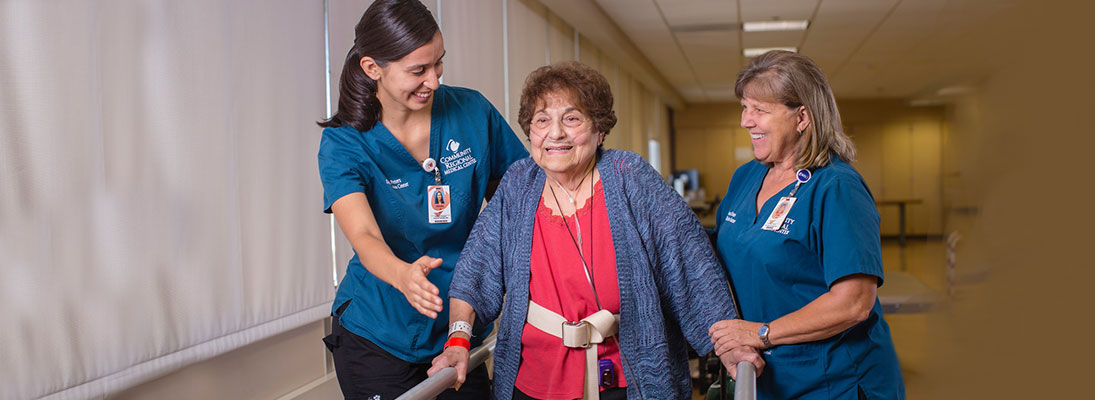
Everyone’s recovery rate is different. How quickly a patient recovers depends on physical health before surgery, how complex the surgery was and determination to get well. Patients typically go home in two to three days after a hip or knee replacement. They can be discharged when their doctor determines they can use the new joint, their body temperature is normal and they’re able to get in and out of bed without help. A patient’s orthopedic surgeon also determines the best setting for post-surgery rehabilitation.
Within the first day after surgery patients are encouraged to move their feet up and down and get out of bed to walk. This continuous movement improves a patient’s overall range of motion. As activity increases our goal is to help the patient get used to the feel of the new joint and prepare them for life with a new hip or knee. It's important for patients to tell the nurse if they feel any numbness, tingling or pain in their feet and legs. We teach strength exercises for the hip or knee to help blood circulation and prevent pressure sores.
Patients walk at first with the help of a walker or crutches. There may be some temporary pain in the new joint, because the muscles are weak from not being used. Pain should end in a few weeks and can be helped with monitored medication. Physical therapy can begin the day of surgery to help strengthen the muscles around the new joint and help regain motion.
When it's time to leave the hospital we’ll discuss:
- How to care for the incision
- A physical therapy program to follow at home
- Special equipment recommended by the doctor
- Needed supplies
- Follow-up doctor appointments
- Medications and other issues
At home
It’s normal for a patient’s energy level to be low right after surgery. Once home, patients should pace themselves. Following the doctor’s advice is very important — it will help avoid problems. Don’t risk health by doing too much too soon. Be aware of how everyday activities feel. Plan some rest periods between activities. The body needs energy for healing. Also, the risk of falling increases if a patient gets too tired. And preventing falls is very important to protecting the new joint.
We use cookies and other tools to optimize and enhance your experience on our website. View our Privacy Policy.
